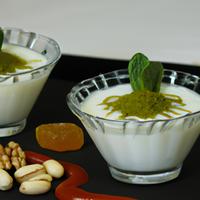
1 serving (30 grams) contains 60 calories, 1.0 grams of protein, 2.0 grams of fat, and 10.0 grams of carbohydrates.

Log this food in SnapCalorie

Nutrition Information
Calories |
472.4 | ||
|---|---|---|---|
% Daily Value* |
|||
| Total Fat | 15.7 g | 20% | |
| Saturated Fat | 7.9 g | 39% | |
| Polyunsaturated Fat | 0 g | ||
| Cholesterol | 39.4 mg | 13% | |
| Sodium | 118.1 mg | 5% | |
| Total Carbohydrates | 78.7 g | 28% | |
| Dietary Fiber | 0 g | 0% | |
| Sugars | 63.0 g | ||
| protein | 7.9 g | 15% | |
| Vitamin D | 0 mcg | 0% | |
| Calcium | 157.5 mg | 12% | |
| Iron | 0.8 mg | 4% | |
| Potassium | 236.2 mg | 5% | |
* Percent Daily Values are based on a 2,000 calorie diet. Your daily values may be higher or lower depending on your calorie needs.
Food Attributes
Source of Calories
About Yogurt glaze
Yogurt glaze is a creamy, tangy topping commonly used in desserts and baked goods. Made with yogurt—typically Greek or natural plain yogurt—sweeteners like powdered sugar or honey, and sometimes a touch of vanilla or citrus juice for added flavor, it delivers a balance of richness and acidity. Inspired by Mediterranean and Middle Eastern cuisines that often incorporate yogurt in both sweet and savory dishes, this glaze adds a refreshing twist to cakes, muffins, and cookies. Nutritionally, yogurt glaze offers some benefits, such as probiotics and protein from the yogurt, depending on the type used. However, its sugar content can be high, making it more suited for occasional indulgence than daily consumption. Opting for lower-sugar or unsweetened varieties can make it a healthier choice while still providing its signature tangy sweetness.



